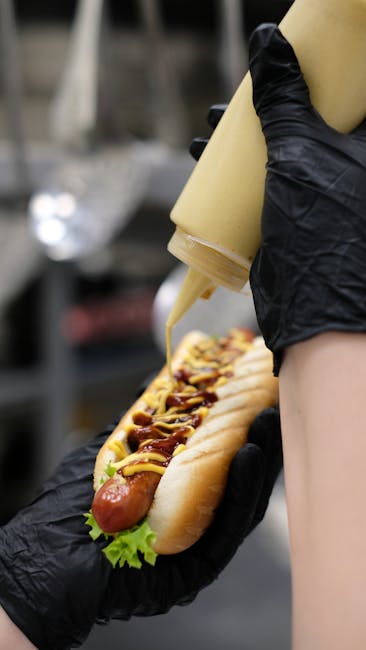How to Defrost Sausage Quickly: Safe & Effective Methods for Every Situation
Need to cook sausage but forgot to thaw it? Don’t worry, you’re not alone! Many cooks find themselves in this time-sensitive predicament. Luckily, there are several safe and effective methods to defrost sausage quickly, allowing you to enjoy your breakfast, lunch, or dinner without delay. This comprehensive guide explores the fastest defrosting techniques, addressing safety concerns and offering tailored solutions for different types of sausage and scenarios.
Understanding the Risks of Improper Defrosting
Before diving into the quick defrosting methods, it’s crucial to understand the potential dangers of thawing sausage improperly. Leaving sausage at room temperature for extended periods can lead to the rapid growth of harmful bacteria, such as Salmonella and E. coli, resulting in foodborne illness. Therefore, prioritizing food safety is paramount when defrosting any meat product, including sausage.
The Danger Zone: 40°F to 140°F
The temperature range between 40°F (4°C) and 140°F (60°C) is known as the “danger zone.” Bacteria multiply most rapidly in this temperature range. Therefore, it’s crucial to keep your sausage either below 40°F or above 140°F during the defrosting process to minimize bacterial growth.
The Fastest Methods for Defrosting Sausage
Several methods can quickly and safely defrost sausage. The best option depends on your time constraints and available resources. Remember always to cook the sausage thoroughly to an internal temperature of 160°F (71°C) after defrosting, regardless of the method used.
1. Cold Water Defrosting: A Balanced Approach
Cold water defrosting offers a relatively quick and safe method. Place the sausage in a sealed, leak-proof plastic bag. Submerge the bag in cold water, ensuring the water completely covers the sausage. Change the water every 30 minutes to maintain a consistently cold temperature. This method typically takes about 30 minutes to an hour for a pound of sausage, depending on thickness and water temperature.
2. Microwave Defrosting: Speedy but Requires Caution
Microwave defrosting is the fastest option, but it requires careful monitoring to prevent uneven cooking. Use the defrost setting on your microwave and check the sausage frequently, turning and rotating it to ensure even thawing. This method is best suited for smaller quantities of sausage. Cooking immediately after microwave defrosting is crucial to prevent bacteria growth.

3. Defrosting in the Refrigerator: The Safest but Slowest Method
While not a quick method, refrigerator defrosting remains the safest. Simply place the sausage on a plate or in a container on the bottom shelf of your refrigerator. Allow ample time, as it can take several hours or even overnight for a pound of sausage to fully defrost. This method minimizes bacterial growth but requires planning.

4. Using a Defrosting Tray: Streamlined and Efficient
A defrosting tray accelerates the thawing process by maximizing surface area contact with cold air. These trays usually feature a series of raised points to improve air circulation. Place the sausage on the tray in your refrigerator to achieve faster than typical fridge defrosting.

Choosing the Right Method for Your Needs
The ideal defrosting method depends on several factors:
- Time Constraints: Microwave defrosting is the quickest, followed by cold water defrosting. Refrigerator defrosting requires the most time.
- Sausage Type: The thickness of the sausage will impact defrosting time. Thicker sausages will take longer to defrost using any method.
- Quantity: Microwave defrosting is better suited for smaller quantities, while cold water defrosting and refrigerator defrosting can handle larger amounts.
- Safety Concerns: Refrigerator defrosting is generally considered the safest method, followed by cold water defrosting. Microwave defrosting requires careful monitoring to prevent uneven cooking and bacterial growth.
Tips for Safe and Efficient Sausage Defrosting
- Never defrost sausage at room temperature: This is the most critical safety precaution.
- Use a food thermometer: Ensure the sausage reaches an internal temperature of 160°F (71°C) after defrosting and cooking.
- Cook immediately after defrosting: Do not refreeze defrosted sausage.
- Divide large quantities: Break down large blocks of sausage into smaller portions for faster and more even defrosting.
- Plan ahead: If possible, take the sausage out of the freezer the night before you plan to cook it, allowing for slow and safe refrigerator thawing.
Troubleshooting Common Defrosting Issues
Even with careful planning, you might encounter some issues during the defrosting process:
Uneven Thawing in the Microwave:
Rotate and rearrange the sausage frequently to promote even defrosting. Consider using the lower power setting for more consistent thawing.
Sausage Still Frozen After Cold Water Defrosting:
Ensure the water is consistently cold and that you are changing the water frequently. Thicker sausage links may require slightly longer defrosting times.
Sausage Becomes Soggy After Defrosting:
Avoid prolonged defrosting in the microwave. If using the cold water method, pat the sausage dry after thawing to remove excess moisture.
Conclusion
Knowing how to defrost sausage quickly and safely is a valuable skill for any home cook. By understanding the risks of improper defrosting and employing the appropriate methods, you can enjoy delicious sausage meals without compromising food safety. Remember, always prioritize safety and cook your sausage thoroughly to an internal temperature of 160°F (71°C) to eliminate harmful bacteria.

